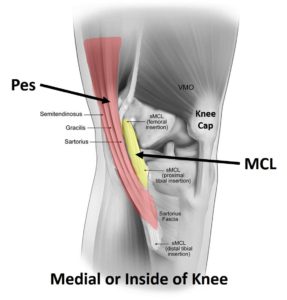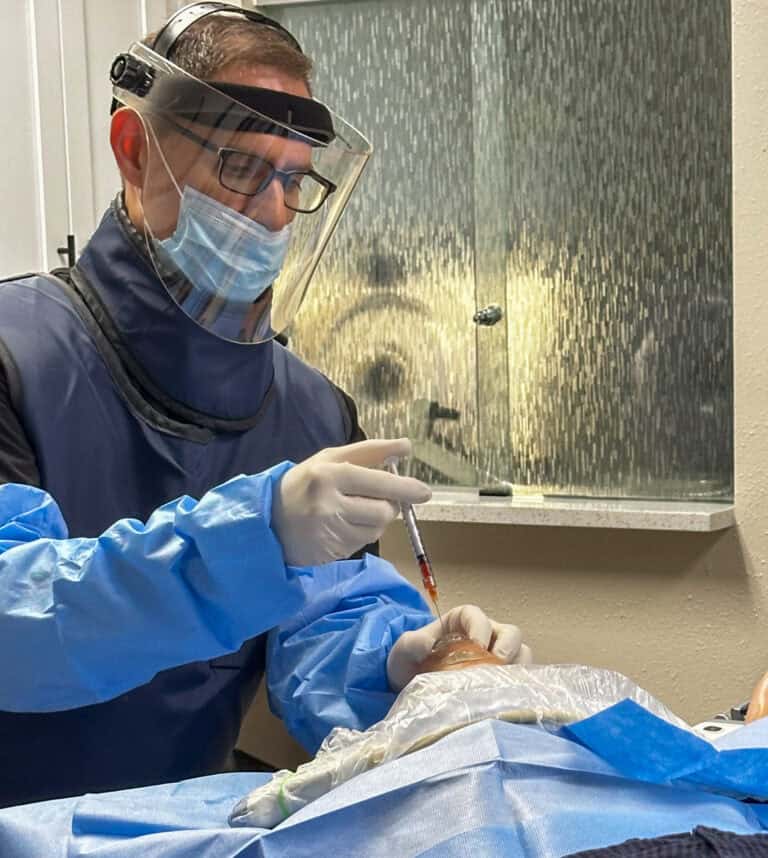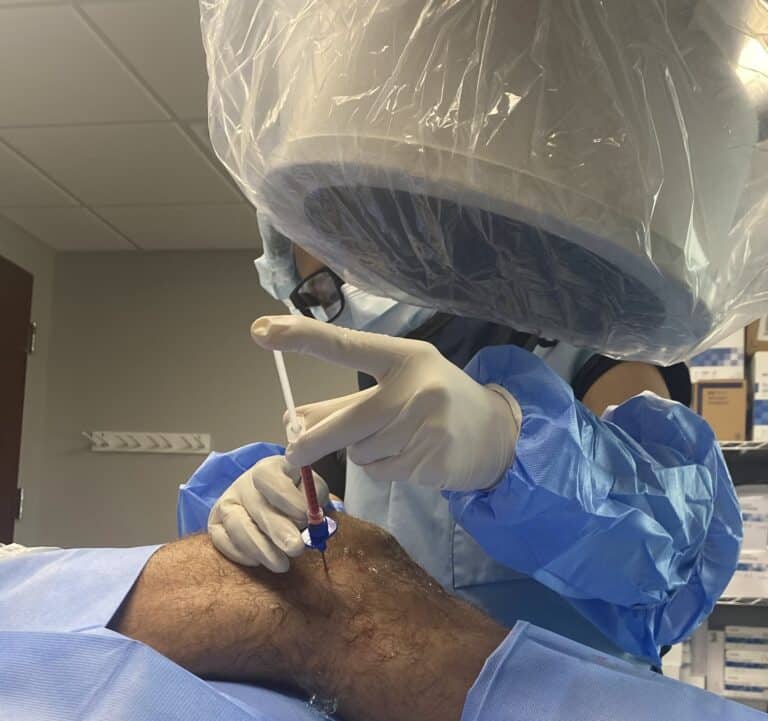Platelet Rich Plasma (PRP) injections for orthopedic conditions have grown considerably as a viable option for improving the quality of the injected tissue resulting in healthier, stronger, and less inflamed tendons and joints. This process also strengthens ligaments to provide better stability around the joints.
Orthobiologics is the umbrella term that encompasses the various types of non-pharmaceutical products that can be used for injections mostly coming from the patient’s own blood, bone marrow, or adipose (fat). The research evidence for the use of PRP for knee arthritis has grown considerably. In our experience, it can be very successful for the treatment of mild to moderate osteoarthritis of the knee and sometimes even for more advanced arthritis. However, in the more advanced conditions, we typically recommend and use bone marrow concentrate.
It is important to note that many of the products that are being advertised as injectable substances (eg. umbilical “stem cells” and exosomes) are actually classified as drugs by the FDA requiring pre-market approval and licensure to be used in clinical trials in humans. None of these products that are used in the general public have received this approval. In other words, the providers are either injecting an illegal drug knowingly or they are unaware of the regulations (which would be hard to believe). In either situation, run the other way!
As with any field of medicine, there are multiple levels of understanding. In this article, we will break down the levels of competency in orthobiologics and take a look at how PRP may help treat knee arthritis.
What are Orthobiologic Injections?
When we mention orthobiologic injections, we mean injections that can heal or help reduce the breakdown of cartilage, ligament, tendons, bone, and muscle. This spans a wide variety of things that can be injected from platelet-based therapies like PRP (Platelet-Rich Plasma) to Bone Marrow Concentrate (BMC), to cultured stem cell procedures and the like. What is injected is often as important as the location of the injection and the method of how it’s injected. Let us explain.
Levels of Competency in Orthobiologics
As mentioned earlier, there are levels of competency in orthobiologics. These are as follows:
1. I Don’t Know What I Don’t Know
2. Blind Intra-articular Injections
3. Image-Guided Intra-articular Injections
4. Interventional Orthopedics
There is a massive difference in the quality of care delivered from the top of this list to the bottom. A positive outcome is likely hit or miss at the first level and much more likely as you move down the list.
1. I Don’t Know What I Don’t Know
This is by far the worst level of understanding and regrettably, is about 70-80% of the providers that you could possibly see for a PRP or stem cell procedure. These providers may have taken a quick weekend course and often make critical errors that destroy the efficacy of the treatment. For example, these providers may be used to injecting high dose steroids, so they include that with a stem cell injection not knowing that this kills all the cells.
Alternatively, they may be used to using long-acting anesthetics and they inject Marcaine (Bupivacaine) into a joint before a PRP injection, killing some of the cartilage cells in the joint before the PRP has a chance to act. Another category is represented by the clinics that didn’t get the memo that amniotic fluid or umbilical cord products have no live stem cells, but they advertise these procedures as containing millions of stem cells.
2. Blind Intra-articular Injections
This group usually consists of surgeons, family doctors, or mid-levels like nurses and physician assistants who have not been trained in the use of imaging guidance like ultrasound or fluoroscopy. These providers stick needles somewhere in the vicinity of the joint and hope for the best. About ⅓ of the time, these providers do not get any orthobiologic into the joint. Unfortunately, this is about half of all orthobiologic injections performed today. This is similar to driving a car blindfolded, something you can do, but is not a good idea.
3. Image-Guided Intra-articular Injections
This group is usually comprised of interventional spine physicians who have added orthobiologics to their usual practices. These providers only perform injections inside the joint. They do use guidance, but they have no idea that orthobiologics should dramatically change how they perform an exam, what is injected, and how it’s injected. They are just taking what they know from injecting steroids and substituting something like PRP. The study highlighted below shows that these providers are woefully ill-prepared to perform this work at a high level.
4. Interventional Orthopedics
These doctors represent less than a few percent of all physicians performing orthobiologic injections. They have taken substantial additional coursework or fellowship training in interventional orthopedics. These providers can target many different structures such as hip labrum or knee ACL ligament. More critically, they also understand that orthobiologics dramatically change what they need to inject and how. To understand a bit more about this approach used by Regenexx, watch the video below.
Injecting an Arthritic Knee with PRP Inside the Joint Isn’t Enough
Approximately 90% of all PRP injections for knee arthritis are just inside the joint. About half of these are blind and about half with guidance. However, very few doctors use a more sophisticated interventional orthopedics approach. Why? Most don’t know any better.
We have been asked many times by doctors that use the simpler approach, why they would take the extra time to do more. After all, what else can be injected? One research study that we have reviewed states that the MCL and pes anserine were injected with PRP, in addition, into the joint and that outcome was compared to patients who only had their joints injected.
The MCL ligament stabilizes the inside of the knee and the pes anserine tendons cross this area. These are tendons that actually start as muscles in the thigh and then make their way down to insert at the inside of the knee below the joint line. See the diagram below.
The researchers compared ultrasound-guided PRP injection inside the joint (IA or intra-articular) alone with IA + the pes anserine (and likely part of the MCL due to proximity). The result? The group that got multiple structures injected did better. Also, more interestingly, the synovial fluid markers of OA activity that were measured decreased more only in the group that had more than the joint injected. Why? The MCL is lax in many of these patients, so injecting it and tightening it likely causes less degenerative instability.
This comprehensive blog post lists all of the high quality randomized controlled trials that have taken place so far in regards to PRP injections for orthopedic problems.
In conclusion, injecting knees with substances like PRP and stem cells is much more complex than simply sticking the needle in there someplace. Hence, finding a provider that understands all of this is key to maximizing your chance of reducing pain and improving function. At Regenexx Tampa Bay, we aim to provide our clients with only the best non-surgical orthopedic alternatives. If you would like more information or better understand if Regenexx is right for you, please don’t hesitate to contact us.











